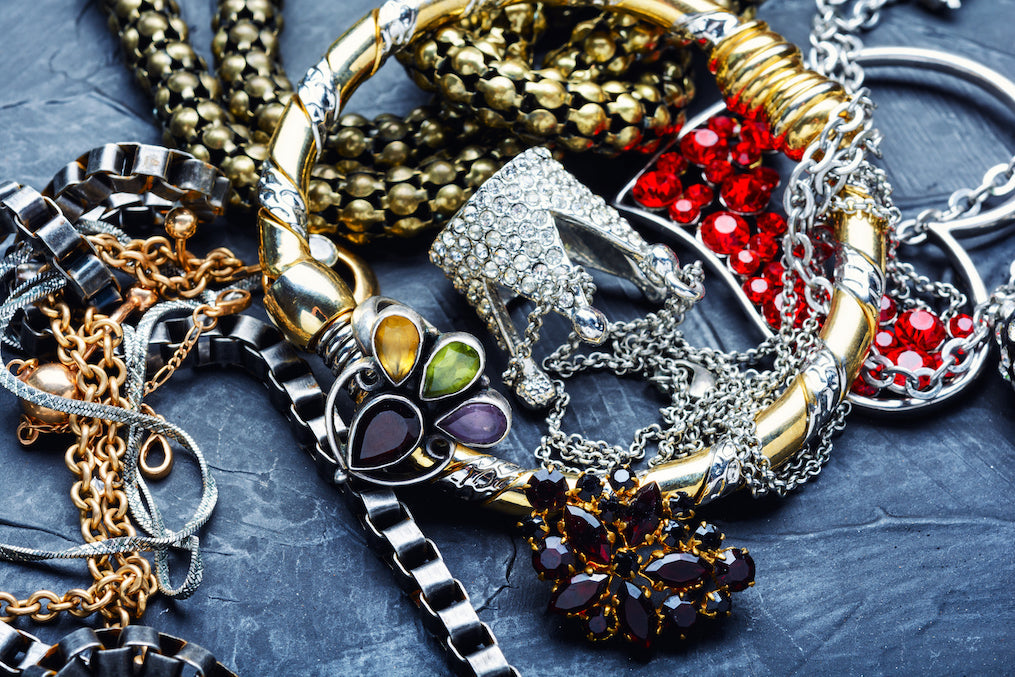The jewelry industry holds immense beauty and significance in our lives, but it also has the potential to create a substantial environmental and social impact. As we become more aware of the need for sustainability and ethical practices, it is crucial to transform the jewelry industry for a better future. In this article, we will explore the key considerations for sustainable and ethical jewelry, discuss the importance of the circular economy, and highlight marketplaces where people can buy and sell used jewelry.
Sustainable and Ethical Jewelry
Key Considerations
To create a sustainable and ethical jewelry industry, several key considerations must be addressed. Responsible sourcing and transparent supply chains are essential. Brands need to ensure that their materials, such as metals and gemstones, are sourced responsibly, with a focus on fair trade principles and ethical mining practices. This includes promoting responsible mining practices, supporting local communities, and ensuring fair wages and safe working conditions for miners and artisans.
Transparent supply chains are crucial to fostering sustainability and ethics. Consumers should have access to information about the origin of materials, the production process, and certifications that guarantee responsible practices. Ethical certifications, such as the Fairtrade Gold certification or the Responsible Jewellery Council (RJC) certification, provide assurance that the jewelry has been produced and sourced in a socially and environmentally responsible manner.
Using recycled materials is another key consideration for sustainable and ethical jewelry. By utilizing recycled metals and gemstones, the industry can reduce its reliance on newly mined resources and decrease the environmental impact of extraction and processing. Recycled materials can be obtained through various channels, including repurposing old jewelry, melting down scrap metal, or sourcing from specialized recycling facilities.
Eco-friendly production techniques are paramount in reducing the environmental footprint of the jewelry industry. This includes adopting energy-efficient manufacturing processes, minimizing water usage, and implementing responsible waste management practices. Furthermore, brands should prioritize the use of non-toxic materials, such as eco-friendly cleaning agents and adhesives, to ensure the safety of workers and the environment.
Longevity and timeless design are essential elements of sustainable and ethical jewelry. By creating durable pieces with timeless appeal, the industry can reduce the need for constant consumption and mitigate the environmental impact associated with the short lifespan of trendy or disposable jewelry. Emphasizing quality craftsmanship and designs that transcend trends encourages consumers to cherish their jewelry for years.
Supporting the Circular Economy
Embracing the principles of the circular economy is vital for transforming the jewelry industry. The circular economy aims to minimize waste, maximize resource efficiency, and extend the lifespan of products. The circular economy can be fostered within the jewelry sector through various strategies, including recycling, repurposing, and supporting the second-hand market.
Understanding the lifecycle of jewelry is the first step toward supporting the circular economy. The lifecycle comprises several stages, from raw material extraction to production, distribution, consumer use, and end-of-life options. By carefully managing each stage, the industry can ensure that materials and products circulate in a closed loop, reducing waste and the need for constant extraction.
Recycling and repurposing jewelry are integral to the circular economy. When jewelry reaches the end of its useful life or is no longer desired, it can be recycled by extracting precious metals, melting them down, and reusing the material to create new jewelry. Also, gemstones can be repurposed by resetting them into new designs or incorporating them into different types of jewelry. These practices minimize waste and conserve valuable resources.
Marketplaces for Buying and Selling Used Jewelry
Marketplaces that facilitate the buying and selling used jewelry play a crucial role in supporting the circular economy and promoting sustainable and ethical practices. These marketplaces provide a platform for individuals to extend the life cycle of jewelry by giving pre-owned pieces a new home. Here are some popular marketplaces where people can buy and sell used jewelry:
- Online platforms for buying and selling used jewelry: Online marketplaces such as eBay, Etsy, and Amazon have dedicated sections for buying and selling used jewelry. These platforms connect buyers and sellers from around the world, offering a vast range of options to choose from. Whether looking for vintage pieces, antique jewelry, or contemporary designs, these online platforms provide a convenient and accessible way to explore a wide selection of used jewelry.
- Dedicated vintage and antique jewelry websites: Specialized websites focus specifically on vintage and antique jewelry. Ruby Lane, 1stdibs, and Chairish are renowned platforms that curate collections of unique and historically significant pieces. These websites attract jewelry enthusiasts and collectors who appreciate the craftsmanship, artistic value, and story behind vintage and antique jewelry. By purchasing from these platforms, you contribute to the circular economy and become a custodian of a piece of history.
- Local thrift stores, consignment shops, and pawnshops: Local thrift stores and consignment shops often have a diverse selection of used jewelry. These stores serve as treasure troves, offering a range of styles and price points. Buying from thrift stores and consignment shops supports local businesses and contributes to sustainable consumption. Pawnshops also provide an avenue for selling or buying pre-owned jewelry, offering immediate cash for those looking to sell unwanted pieces.
- Auction houses and social media platforms for jewelry sales: Auction houses specializing in jewelry auctions can be an excellent option for buying and selling high-end or valuable pieces. These auctions attract collectors and enthusiasts willing to invest in unique and rare jewelry items. Social media platforms like Instagram and Facebook have also become popular marketplaces for jewelry sales. There are dedicated jewelry communities and marketplace groups where individuals can connect directly with buyers and sellers, facilitating the exchange of pre-owned jewelry.
Environmental Benefits
Opting for used jewelry has several environmental benefits. Buying used pieces minimizes waste and reduces the carbon footprint associated with jewelry production. The recycling and repurposing of jewelry help conserve resources and minimize the need for new mining activities. Additionally, supporting brands prioritizing eco-friendly production techniques and packaging further contributes to environmental sustainability.
Social Responsibility and Positive Impact
A sustainable and ethical jewelry industry prioritizes social responsibility. It ensures fair wages and safe working conditions for artisans and workers involved in production. Responsible brands support local communities and ethical mining practices, aiming to create a positive social impact. Initiatives such as educational programs, healthcare services, and community development projects showcase their commitment to social responsibility.
Consumer Empowerment and Conscious Choices
As consumers, our choices have the power to shape the future of the jewelry industry. We can drive positive change by making conscious choices and supporting sustainable and ethical jewelry brands. It starts with being informed and educated about the sustainability and ethics of the brands we choose to support. Look for transparency in their supply chains, certifications that guarantee responsible practices, and a commitment to environmental and social responsibility.
Consumer empowerment goes beyond just purchasing decisions. It also involves engaging with brands and advocating for change. Share your values and expectations with the brands you support, encouraging them to prioritize sustainability and ethical practices. Creating a demand for responsible jewelry can push the industry to embrace more sustainable and ethical approaches.
Final Thoughts
The transformation of the jewelry industry towards sustainability and ethics is a collective effort. By considering the key considerations outlined in this article and supporting the circular economy; we can make a positive impact. Sustainable and ethical jewelry practices, from responsible sourcing to recycling and repurposing, contribute to a more environmentally conscious and socially responsible industry.









Reader Interactions